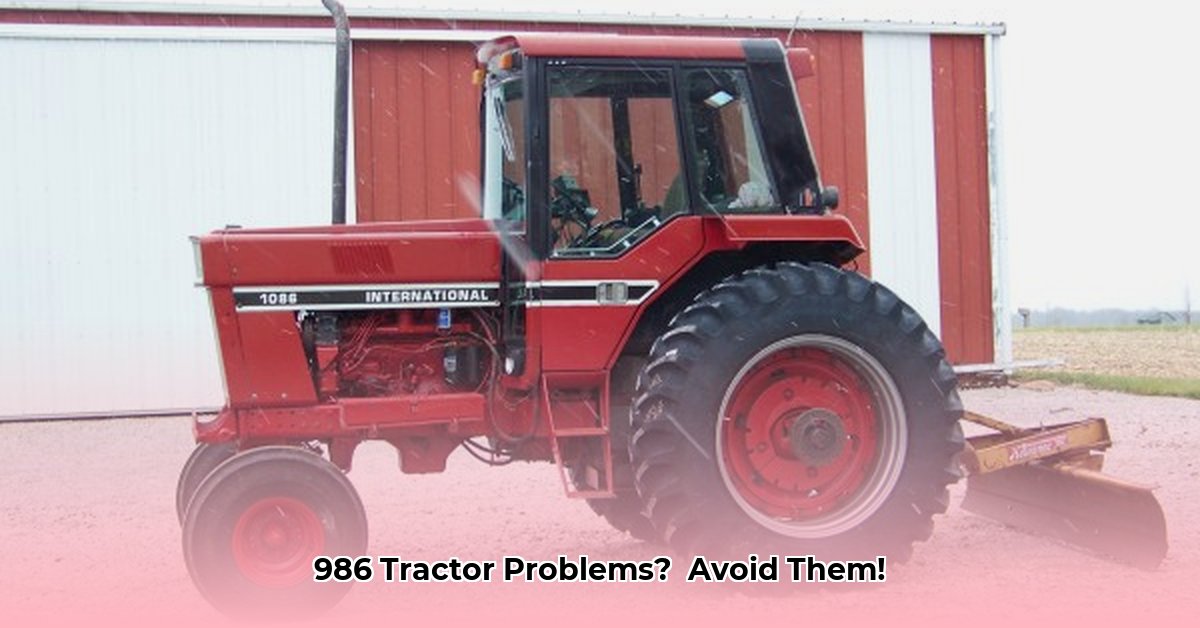
The International Harvester 986: a powerful machine with a loyal following. But before you fall in love with its classic charm, understand the potential pitfalls. This guide provides a step-by-step pre-purchase inspection checklist and addresses common problems to help you make an informed decision. For more on popular tractor brands, check out this helpful resource: Popular Tractor Brands.
Pre-Purchase Inspection: Your First Line of Defense
A thorough pre-purchase inspection is paramount. Think of it as an insurance policy against costly surprises. This detailed approach minimizes risks and helps you negotiate a fair price.
Step 1: The Visual Inspection (30 minutes): Begin with a comprehensive visual assessment. Look for rust, especially around critical components like the transmission and PTO. Note any oil, hydraulic fluid, or coolant leaks. Examine the tires for wear. Any signs of previous repairs (even minor ones) may hint at larger issues.
Step 2: Transmission Test (15 minutes): This is a crucial area. Shift the transmission through all gears (forward and reverse). Listen for any grinding, slipping, or hesitation. Rough shifting indicates potential problems affecting the gears, synchronizers, or clutch components.
Step 3: PTO Operation Check (10 minutes): Engage and disengage the PTO (Power Take-Off) at various speeds. Listen for unusual noises or vibrations. A smooth operation ensures the PTO components are functioning correctly. Issues can range from simple adjustments to expensive component replacements.
Step 4: 4WD System Evaluation (10 minutes): For 4WD models, thoroughly test the 4WD engagement and disengagement on different surfaces. Issues may involve binding, improper engagement, or problems with the differentials.
Step 5: Hydraulics Health Check (10 minutes): Check the hydraulic fluid level for leaks. Test the hydraulic lift and steering systems. Proper functioning ensures the responsiveness and lifting capacity of the tractor are sufficient. Slow or erratic operation signals potential leaks, or issues with the pump or control valves.
Step 6: Engine Assessment (15 minutes): Check oil and coolant levels before starting the engine. Listen for unusual noises (knocking, ticking, or unusual sounds) once running. Excessive smoke or blue-hued exhaust fumes can signal problems with piston rings, valve seals, or cylinder head components.
Step 7: Engage with the Seller (30 minutes): Ask detailed questions about the tractor's maintenance history, any known repairs, and its overall use. A transparent seller is a positive sign. Documentation (invoices, repair records) strengthens confidence. Don't hesitate to ask about any challenges the previous owner encountered.
Addressing Common 986 International Tractor Problems
The 986, while robust, has known weaknesses. Understanding these potential issues allows for better negotiation and budgeting.
Transmission Troubles: Transmission problems are common and can range from minor gear grinding to catastrophic failure. Repairs can be extensive and costly, often requiring a professional rebuild. A pre-purchase inspection by a qualified mechanic is highly recommended.
PTO Problems: PTO issues, ranging from minor adjustments to major component replacements, can severely impact the tractor's functionality. A malfunctioning PTO can render essential implements unusable.
4WD Woes: Difficulty engaging or disengaging the 4WD system can stem from various problems, such as worn components in the transfer case or front axle. Repair costs can vary greatly depending on the specific issue.
Negotiation and Purchase Strategy
Your detailed inspection is your greatest asset. Use your findings to negotiate the price downwards; a thorough report highlights potential repair costs, offering solid leverage. Transparent communication is key to a fair deal.
Post-Purchase Maintenance: Extending the Life of Your 986
Regular maintenance is crucial. This includes timely oil changes, filter replacements, and inspections of key components. Proactive maintenance maximizes the tractor's lifespan and working potential.
Weighing the Pros and Cons: Is a 986 Right for You?
The 986 offers a compelling combination of power and classic design. However, the potential for costly repairs must be acknowledged. Thorough pre-purchase inspection coupled with realistic budgeting is crucial for a successful purchase.
Cost Considerations: Potential Repair Expenses
| Component | Potential Repair Cost Range (USD) |
|---|---|
| Transmission | $2,000 - $6,000+ |
| PTO | $500 - $2,500+ |
| 4WD System | $1,000 - $4,000+ |
(Note: These are estimates and may vary based on location, labor costs, and the extent of the repair.)
Buying a used 986 involves inherent risk. But careful planning, a thorough inspection, and realistic expectations can significantly improve your chances of acquiring a reliable and valuable machine.